When it comes to the roof over your head, you might think it’s a single, uniform structure. However, a typical roof comprises multiple layers, each fulfilling a specific role in protecting your home from the elements. Understanding these different roofing layers is crucial for homeowners to appreciate the complexity and importance of a well-designed roofing system.
At A. Fricker Roofing and Waterproofing, we understand a roof’s role in a home’s overall structure. That’s why we believe it’s important to know the elements of your roof before you install or replace it. In this blog post, we’ll explore the different roof layers, their functions, and the significance of proper maintenance.
How Many Layers Does A Roof Have?
As a homeowner, you might wonder, “How many layers of materials does my roof have?” The exact answer relies on your home’s roofing system and the specific materials.
A typical shingle roof, for example, generally consists of the following layers:
1. Roof deck or sheathing
2. Underlayment or roofing felt
3. Roof insulation
4. Ice and water shield
5. Outer materials (asphalt shingles)
6. Flashing
7. Roof ventilation components
8. Gutters and downspouts
It’s important to note that the number of roof layers and the materials used may vary depending on local building codes, climate conditions, and your home’s specific design requirements.
What Is The Function Of Each Layer In A Roofing System?
As mentioned, each roof layer plays a significant role in the protection of your home. Here is a brief explanation of these layers and their functions:
#1 Roof Deck or Sheathing
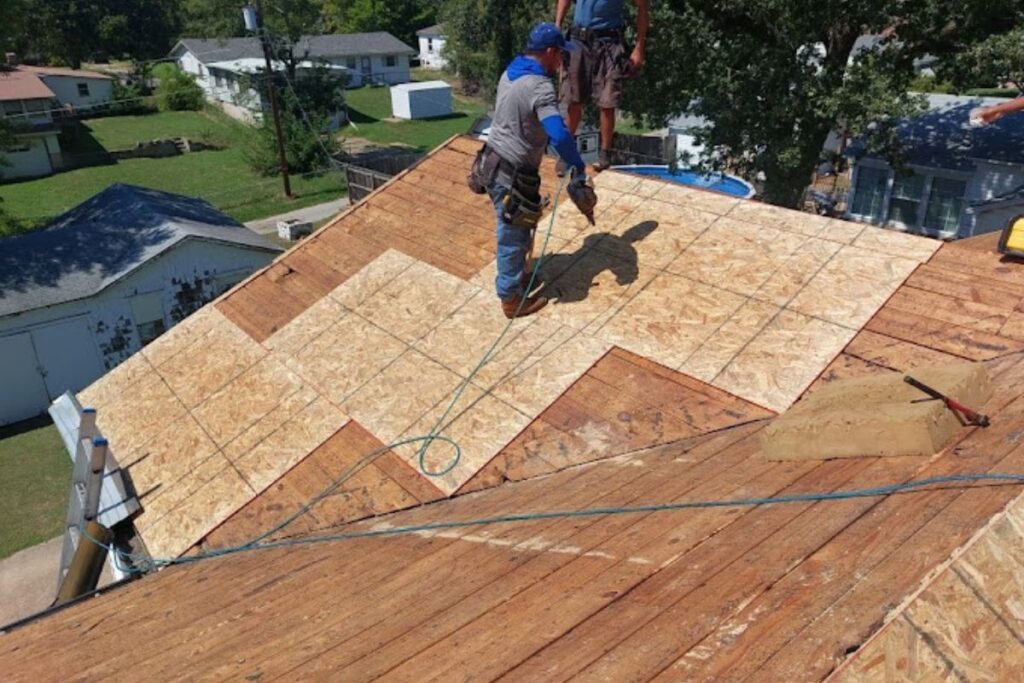
The roof deck, also known as sheathing, is one of the primary roof layers of your roofing system. It acts as a sturdy foundation for the rest of the materials and is typically made of oriented strand board (OSB) or plywood in pitched roofing systems. For flat roofs, the deck is often constructed using concrete, providing a solid and durable base for the roofing layers above. The roof deck transfers the weight of the roofing materials and any additional loads (like snow) to the building’s framing.
#2 Underlayment or Roofing Felt
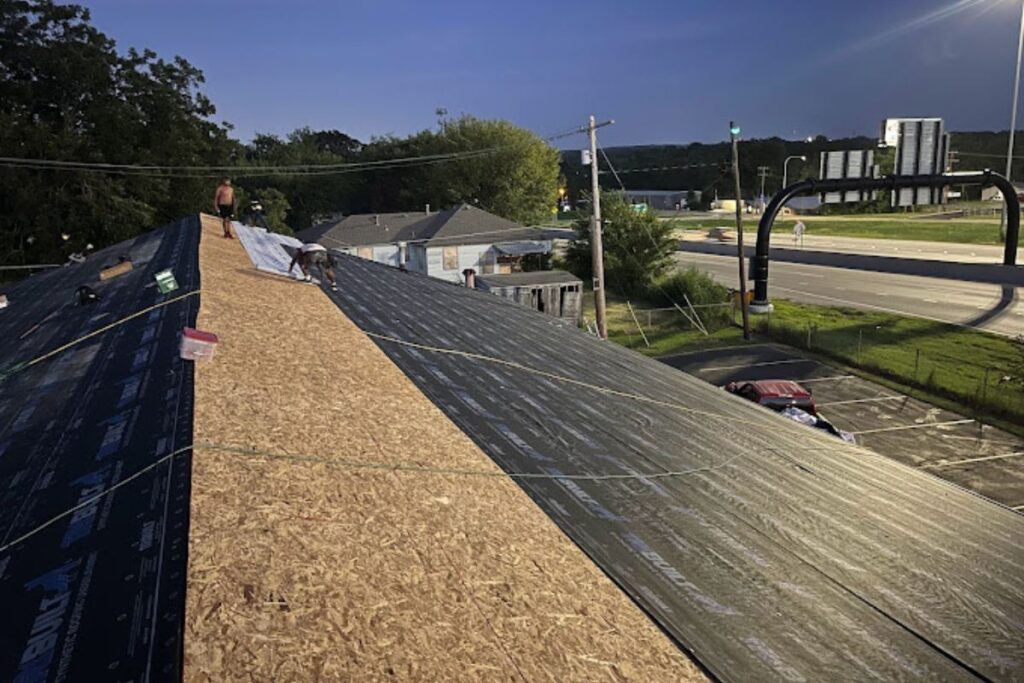
Next up is the underlayment or roofing felt layer. This water-resistant or waterproof membrane is installed directly over the roof deck, serving as a secondary moisture barrier. Its primary role is to prevent leaks in case the primary roofing material (shingles, tiles, etc.) gets damaged. It also protects against severe weather conditions, including wind-driven rain, that can cause damage or water infiltration.
Common types of underlayment include asphalt-saturated felt, synthetic, or self-adhering membranes. These materials provide enhanced protection against moisture infiltration, safeguarding your home’s interior from potential water damage.
Also Read: What Is A Roof Underlayment & Its Different Types
#3 Roof Insulation
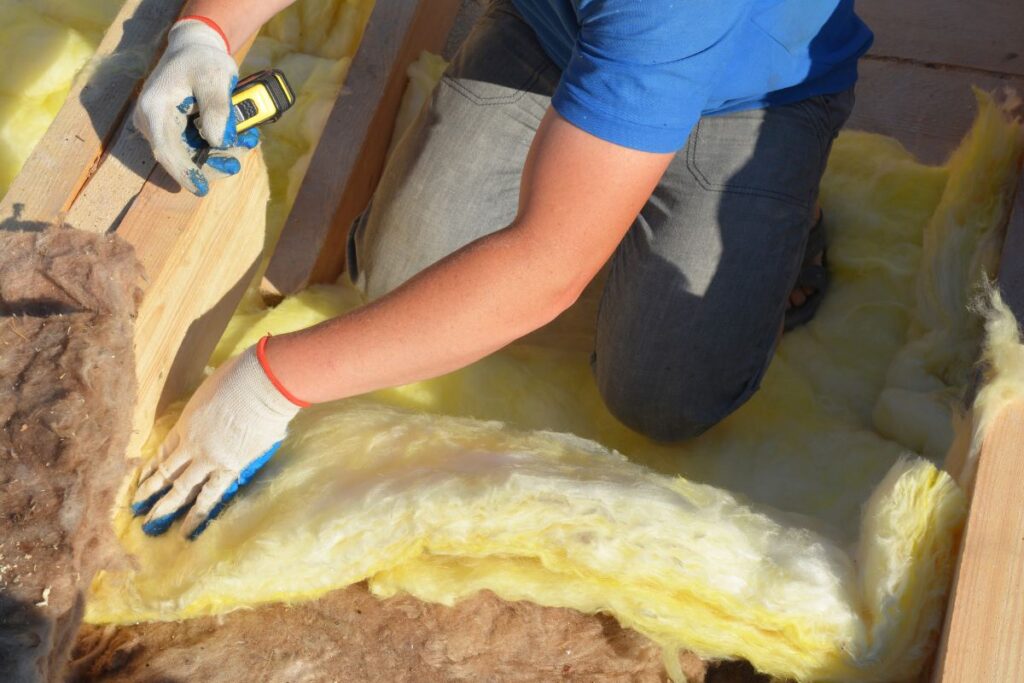
Roof insulation is crucial for regulating your home’s temperature and improving energy efficiency. It is typically installed below the roof deck between rafters or trusses in the attic space.
Insulation materials like fiberglass batts, rigid foam boards, or spray foam insulation help reduce heat transfer through the roof. In the summer, insulation prevents excessive heat from entering your home, while in the winter, it minimizes heat loss, keeping your living spaces comfortable and lowering energy costs.
#4 Ice and Water Shield
An ice and water shield is a special waterproof membrane that is used to protect especially vulnerable parts of your roof such as valleys and eaves. Its main job is to stop water from damaging the roof deck if it gets underneath the roofing materials like shingles or metal.
It helps keep your roof safe and dry, even if the outer layer gets damaged. Installing an ice and water shield is an important step to make sure your roof lasts for many years.
#5 Outer Materials

The primary roofing material is your roof’s outermost and most visible layer. This layer protects the underlying layers from the external elements, including snow, wind, and UV radiation. This layer of your roof will also affect the overall appearance of your home. Asphalt shingles, metal panels, clay or concrete tiles, slate, and single-ply membranes (for flat roofs) are some of the commonly used top layers of a roof.
Asphalt shingles are one of the most popular choices for residential roofs as they are affordable, tough, and available in a wide range of styles and colors. On the other hand, metal panels are known for their long lifespan and resistance to fire and extreme weather conditions. Tiles, slate, and single-ply membranes offer unique aesthetic appeal and specialized performance characteristics.
#6 Flashing
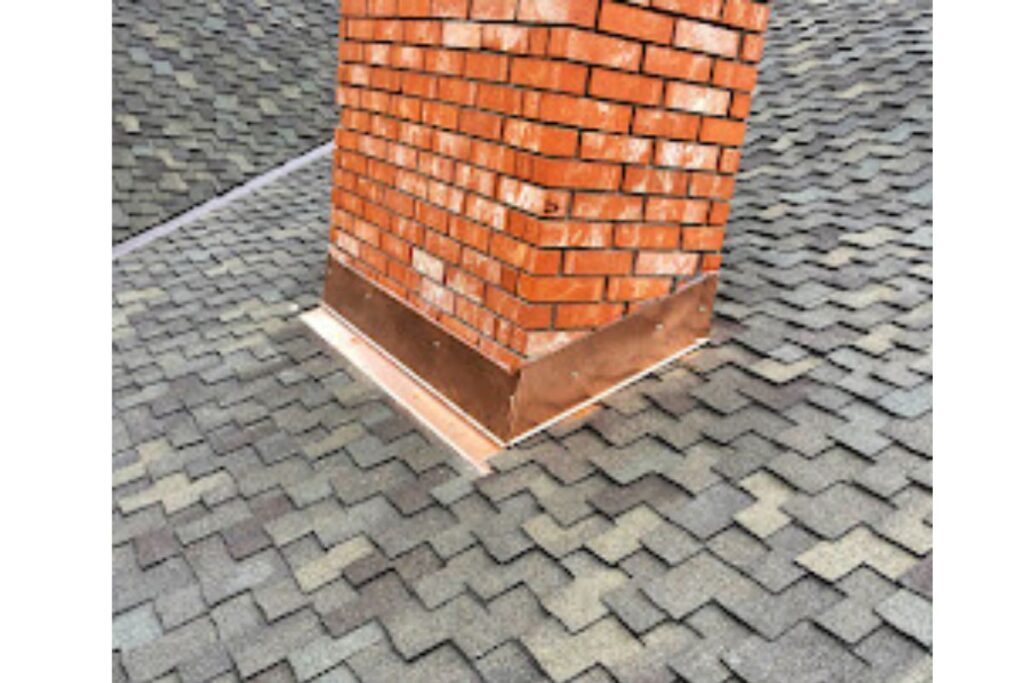
Flashing is a critical component of a well-designed roofing system. It’s typically made of metal or synthetic materials and is installed around roof penetrations, valleys, chimneys, and other areas prone to leaks.
Flashing creates a watertight seal between the roofing material and the surrounding surfaces, preventing water infiltration and potential damage to the underlying layers. Without proper flashing, your roof would be vulnerable to leaks, potentially leading to costly repairs or structural damage.
Some of the most common types are drip edge flashing, counter flashing, step flashing, valley flashing, chimney flashing, vent pipe flashing, and skylight flashing.
Also Read: Homeowner’s Guide to Roof Flashing & It’s Types.
#7 Roof Ventilation
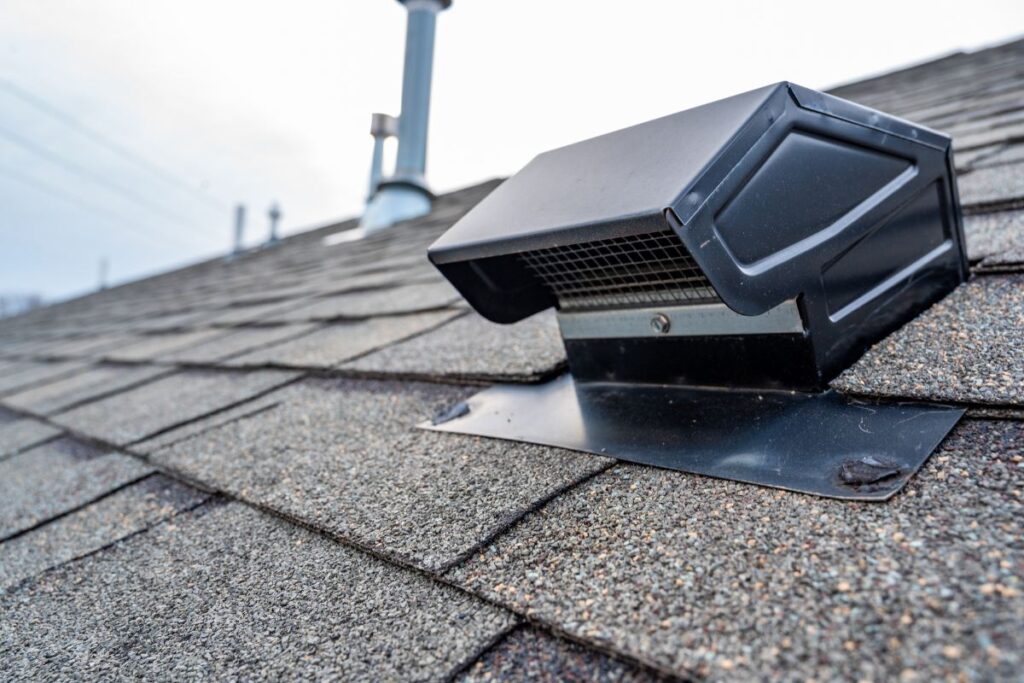
Proper roof ventilation allows air circulation and moisture management within the roofing system. Adequate ventilation helps prevent moisture buildup, which can lead to mold growth, rot, and premature deterioration of the roofing materials.
Roof ventilation is typically achieved through ridge vents, soffit vents, or gable vents. These components allow air to flow from the eaves to the ridge, creating a continuous airflow that helps regulate temperature and remove excess moisture.
#8 Gutters
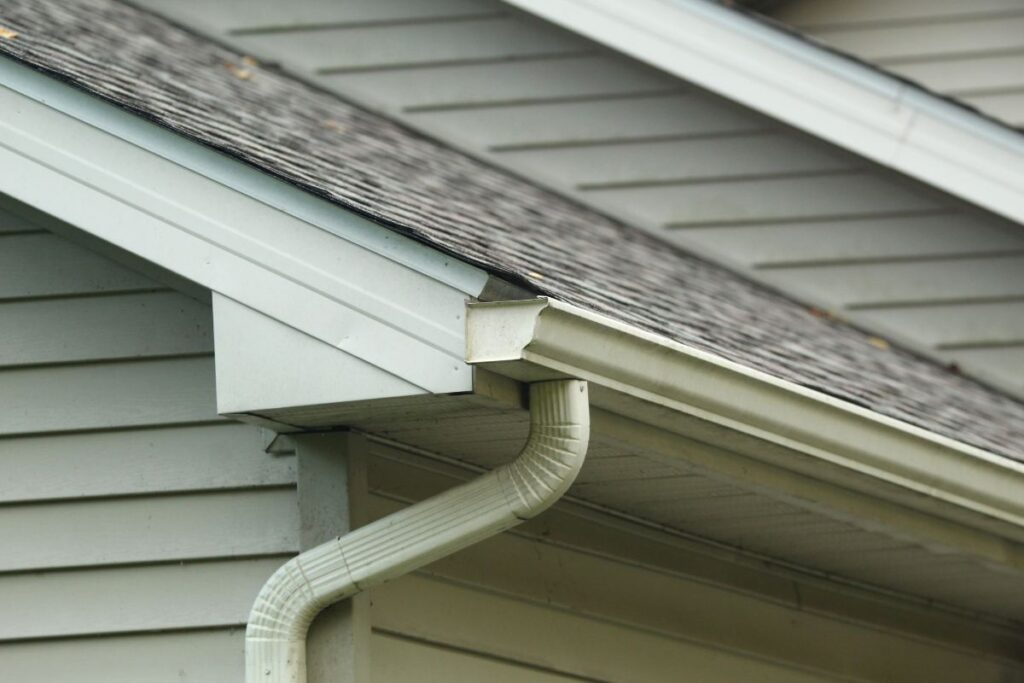
A well-functioning roofing system may include various accessories and fixtures in addition to the primary layers. Gutters and downspouts prevent water damage and erosion by diverting the water away from the roof and the home’s foundation. Without a drainage system, water would flow down the sides of the house, behind the siding and fascia, causing rot and other damage.
How To Maintain The Layers Of A Roof
While understanding the different roof layers is essential, proper maintenance is equally crucial for your roofing system’s extended lifespan and performance. Regular inspections, prompt repairs, and timely replacements can help prevent costly damage and extend the life of your roof.
During an inspection, professionals assess the overall condition of your roof and inspect each layer for signs of wear, damage, or potential issues. They may recommend repairs or replacements of specific layers or components to maintain the integrity of the entire roofing system.
From the sturdy roof deck to the waterproof underlayment, insulation, and accessories, each layer contributes to the overall performance and durability of the roofing system. Proper installation, maintenance, and timely replacements ensure your roof sustains your home for years.
Call A. Fricker Roofing and Waterproofing For Your Roof Installation In Tulsa
If you are looking for quality roof installation services for your home, it’s time to call our team at A. Fricker Roofing and Waterproofing in Tulsa, Oklahoma. Our experienced and certified roofing experts can handle your project with ease and precision, whether it’s installing a completely new roof or replacing an old, outdated one.
Our expert roofers will work to understand your specific requirements, preferences, and budget and provide you with a customized solution. Feel free to give us a call today at (918) 402-7167. We’re here to answer all your roof-related questions and concerns and to guide you through the entire process – from the initial consultation and material selection to the final installation and clean up.

